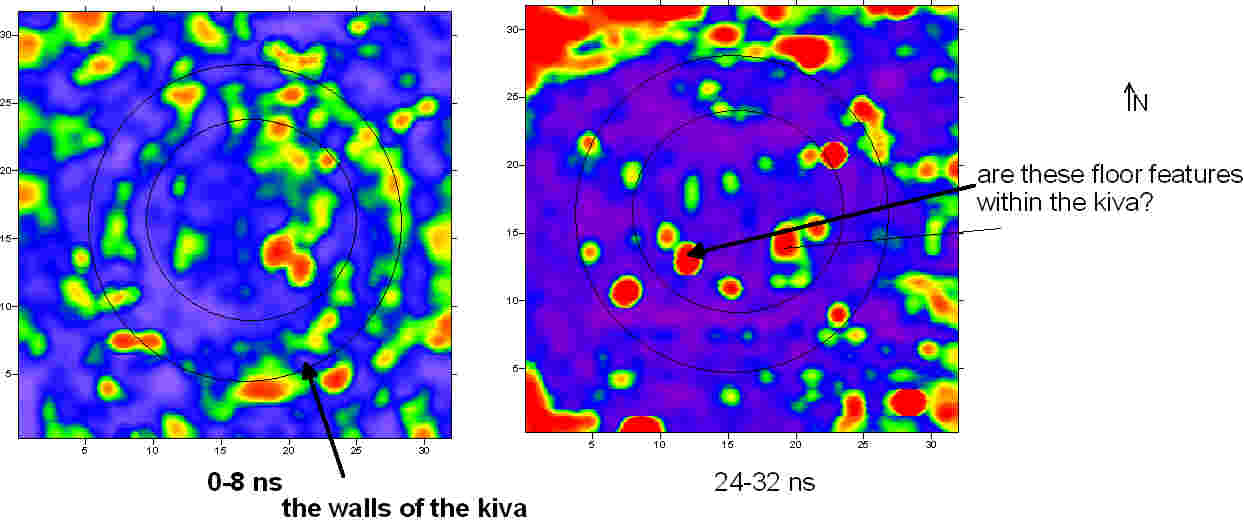
Kivas in the American Southwest
Kivas are semi-subterranean structures that were used for
habitation and ritual activity in the prehistoric past (and some are still used
to day in modern Pueblo societies). Finding them, and most
importantly studying them, can tell us about social change and ritual activity
in the past. They are also still considered sacred by the descendents of
the people that built them, so preserving them is very important. Here is
what they look like today, after partial excavation and wall stabilization.
The first kiva I studied with GPR was at Bluff, Utah, near the
Greathouse.

Using the 500 MHz antenna and slicing up the data as usual,
the outside wall of the kiva was clearly visible in the shallow slices,
 and
the deeper slices showed another feature inside the kiva.
and
the deeper slices showed another feature inside the kiva.

We excavated the outer ring, and sure enough the wall was
where the GPR maps said it would be.
But more importantly we excavated the feature inside the outer walls, and found
another concentric wall, which was totally unexpected.
![]() We just went back to this site in May, 2003 and re-did the study using the 400
MHz antenna and got VERY different results! The two walls are still very
visible, but the inner wall shows up much better. Also, there are a number
of features within the interior of the structure that may be floor features.
These data still need to be worked with, but they are VERY encouraging.
We just went back to this site in May, 2003 and re-did the study using the 400
MHz antenna and got VERY different results! The two walls are still very
visible, but the inner wall shows up much better. Also, there are a number
of features within the interior of the structure that may be floor features.
These data still need to be worked with, but they are VERY encouraging.
 I suspect that the 400 MHz has both better resolution and depth of penetration
than the 500 MHz, which resulted in the more precise maps.
I suspect that the 400 MHz has both better resolution and depth of penetration
than the 500 MHz, which resulted in the more precise maps.
Also in May, 2003 we collected another grid over a possible
kiva near Comb Wash in Utah. This area has a number of features that
appear to be kivas (very shallow depressions), but so far none have been
excavated to confirm this hypothesis. This is what the surface looked like
at one of the kivas. It was barely visible, and I was extremely
pessimistic that it would turn out to be one of these important structures. .
But sure enough, when the data were processed, there was another kiva,
.
But sure enough, when the data were processed, there was another kiva,
 and
some other amazing features as well, including a buried room block just north of
the kiva, and another unusual "squarish" feature to the southeast.
and
some other amazing features as well, including a buried room block just north of
the kiva, and another unusual "squarish" feature to the southeast.

With those preliminary results in mind, here are the results of Tiffany Osburn's study of these kivas in Comb Wash, Utah: Tiffany's study As you will see, they are very different than we initially hypothesized!